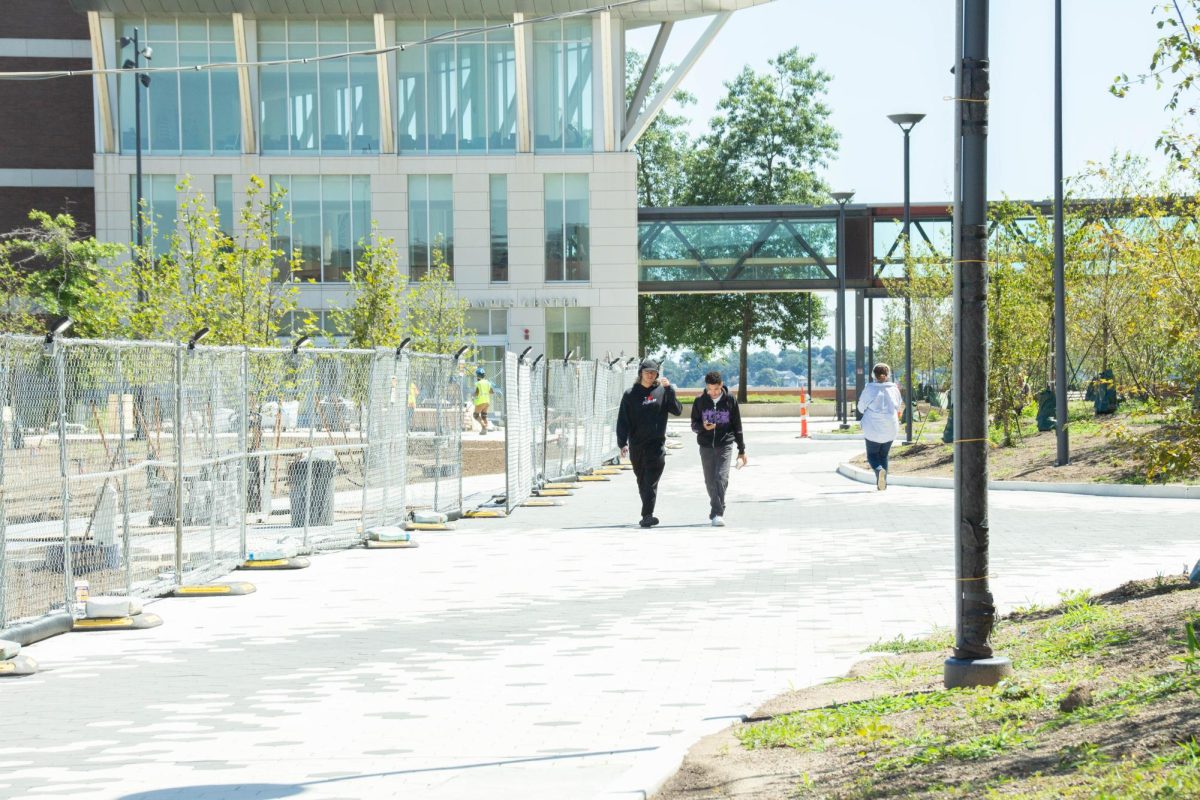UMass Boston was not my first choice, but it was the least expensive one, even as an out-of-state student. When I first toured campus in April, I was assured that the ugly construction site in the center of campus, while annoying, would be gone by the time classes began in earnest. Now, that date has shifted to mid-November: just in time for the snow to kill the plants and make the pathways unwalkable.
Having never seen campus before the central buildings were demolished, I’m left to trust that really, campus is much better than it was before—just ignore the crumbling infrastructure, rising costs and lack of transparency. Plastered across campus are signs of the all-important 25-year plan, accompanied by plenty of buzzwords. The new campus will be bold, innovative and sustainable, we promise!
If 12 years of rural New Hampshire public schools taught me anything, it’s to never trust any promises made by administrators. Schools of this size are consistently plagued by issues with accountability and communication. In which ways will this new campus be bold and innovative, besides the fact that the new science building has plenty of sharp angles and glass? How will a monoculture courtyard and a parking lot in the middle of campus be sustainable? Will the new buildings be intuitive and accessible for disabled students to navigate? Will any of this improve campus life?
Between the 404 errors and recursive links, it’s impossible to navigate the UMass Boston website enough to learn much more information. Instead of having one central page about the Campus Plan, it’s split across several outdated pages, and that’s not to mention the disparities between the mobile and desktop views. This seems par for the course for UMass Boston. While my experience might be uniquely terrible, I’m inclined to believe that every freshman this year has dealt with the conflicting information spread across seven or eight equally terrible platforms: WISER, the housing portal, Property Boss, the third-party tuition website, My Health Beacon, the UMass Boston website, and the mobile app—which is functionally just a browser with a lighthouse across the header—to name just a few.
Orientation was better, but barely. Presentations focused, first and foremost, on diversity. To UMass Boston’s credit, this is rightfully a big deal for many students; diversity makes a campus safer and less stressful, and often increases the quality of education. For many reasons, it was personally a key factor in my decision to commit to UMass Boston. However, after a certain point, it makes me distrustful. Surely if UMass Boston was all it’s cracked up to be, there would be much more to brag about, right?
Instead, I hear more about the all-encompassing 25-year plan. After spending more time in McCormack and Wheatley during orientation, I wonder why the renovation of these buildings was not at the top of UMass Boston’s priority list. Without knowing what the old buildings looked like before they were demolished, I can’t be sure that this wasn’t the right call. On the other hand, most students will spend a lot more time in McCormack and Wheatley than in the other buildings. Wouldn’t it make sense for these to be the most important renovations?
Those in charge assure the student body that they’re listening to student demands, but when has that ever been true? Student governments and student councils ostensibly exist to make our voices heard, but in practice, they’re without substance. Regardless of budget, all schools, even public ones, must make money somehow, and you don’t make money by listening to what students want. You make money by drawing in new students, and overcharging the ones you already have.
Don’t get me wrong, there’s plenty about UMass Boston that I’m excited about. The location, of course, is gorgeous. A stone’s throw from the harbor and a short train ride from downtown, UMass Boston’s campus strikes the best of both worlds. There are plenty of internships, scholarships and other opportunities, even and especially for first-year students, that are unique to UMass Boston. The food is… not the worst. These benefits aren’t nearly enough to discourage my pessimism.
UMass Boston has not made the transition from high school to college easy for me or, I’m sure, any other incoming students. Every established student I’ve talked to has complained about how painfully bureaucratic it is to schedule classes, apply for work study, pay tuition—the list goes on. More than anything, I worry that all these promises about the 25-year plan will fall through, just like every other thing I’ve been promised by public schools; my trust has been broken before, and undoubtedly will be again. I hope that UMass Boston proves me wrong.


